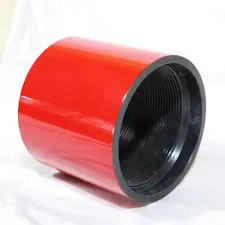- Afrikaans
- Albanian
- Amharic
- Arabic
- Armenian
- Azerbaijani
- Basque
- Belarusian
- Bengali
- Bosnian
- Bulgarian
- Catalan
- Cebuano
- Corsican
- Croatian
- Czech
- Danish
- Dutch
- English
- Esperanto
- Estonian
- Finnish
- French
- Frisian
- Galician
- Georgian
- German
- Greek
- Gujarati
- Haitian Creole
- hausa
- hawaiian
- Hebrew
- Hindi
- Miao
- Hungarian
- Icelandic
- igbo
- Indonesian
- irish
- Italian
- Japanese
- Javanese
- Kannada
- kazakh
- Khmer
- Rwandese
- Korean
- Kurdish
- Kyrgyz
- Lao
- Latin
- Latvian
- Lithuanian
- Luxembourgish
- Macedonian
- Malgashi
- Malay
- Malayalam
- Maltese
- Maori
- Marathi
- Mongolian
- Myanmar
- Nepali
- Norwegian
- Norwegian
- Occitan
- Pashto
- Persian
- Polish
- Portuguese
- Punjabi
- Romanian
- Russian
- Samoan
- Scottish Gaelic
- Serbian
- Sesotho
- Shona
- Sindhi
- Sinhala
- Slovak
- Slovenian
- Somali
- Spanish
- Sundanese
- Swahili
- Swedish
- Tagalog
- Tajik
- Tamil
- Tatar
- Telugu
- Thai
- Turkish
- Turkmen
- Ukrainian
- Urdu
- Uighur
- Uzbek
- Vietnamese
- Welsh
- Bantu
- Yiddish
- Yoruba
- Zulu
casing coupling dimensions
Understanding Casing Coupling Dimensions in Drilling Operations
Casing coupling dimensions are a critical aspect of the oil and gas industry, particularly in drilling operations where the integrity of the wellbore is paramount. Casing refers to the series of pipes that line the wellbore to provide structural support and protect against the collapse of the surrounding formation. Couplings, on the other hand, are the devices used to connect these casing sections together, ensuring a secure and leak-proof assembly. This article delves into the importance of casing coupling dimensions, key specifications, and their impact on drilling efficacy.
Importance of Casing Coupling Dimensions
The primary purpose of casing is to isolate the hydrocarbon-producing formations from surrounding fluids, prevent blowouts, and maintain the stability of the well. Therefore, the dimensions of both casing and coupling need to be meticulously specified and adhered to. The pressure, temperature, and chemical composition of the fluids in the formation can vary significantly, demanding precise engineering to avoid failures that can lead to severe environmental and economic consequences.
Key Specifications
Casing and coupling dimensions are typically governed by standards set by various organizations, including the American Petroleum Institute (API). These standards cover several factors such as outer diameter (OD), inner diameter (ID), wall thickness, length, and the type of threads used for coupling connections.
1. Outer Diameter (OD) This is crucial for ensuring the compatibility of casing strings when they are stacked or intersected. Generally, the size of the casing is determined by the borehole size and the anticipated pressures and loads it must withstand.
2. Inner Diameter (ID) The ID is significant for the flow of fluids, including oil, gas, and completion fluids. A larger inner diameter facilitates greater flow rates but may necessitate thicker walls to maintain structural integrity.
casing coupling dimensions

3. Wall Thickness The wall thickness must be sufficient to withstand the stresses imposed during drilling and production. It is usually determined according to the anticipated pressures and the type of formation being drilled.
4. Length of Couplings Couplings must be precisely dimensioned to ensure that the casing strings can be easily and securely connected. Misalignment can lead to significant issues during installation and may even compromise the wellbore’s integrity.
5. Thread Types The type of thread, often API threads, has implications for the torque and load that the connection can handle. The right choice of threading is critical, especially under high-pressure conditions.
Impact on Drilling Efficacy
The incorrect dimensioning of casing and couplings can lead to numerous challenges during drilling operations. Inadequate wall thickness or inappropriate OD can result in casing failure, leading to potentially catastrophic blowouts or leaks. Moreover, poorly dimensioned couplings may not fit properly, increasing the risk of operational delays and additional costs associated with repairs or replacements.
Furthermore, the efficiency of cementing operations hinges on the correct coupling dimensions. Properly sized couplings allow for better cement placement, which is vital for zonal isolation and the overall success of the well.
Conclusion
Casing coupling dimensions play a pivotal role in the safety and efficiency of drilling operations in the oil and gas industry. Understanding the significance of precise specifications—like outer diameter, inner diameter, wall thickness, coupling length, and thread types—is essential to mitigate risks and ensure the successful completion of wells. Investing time and resources into ensuring the correct dimensions can lead to smoother operations, reduced costs, and a lower environmental impact overall. As the industry continues to evolve, maintaining high standards in casing coupling dimensions will remain a cornerstone of effective and safe drilling practices.
-
Tubing Pup Joints: Essential Components for Oil and Gas OperationsNewsJul.10,2025
-
Pup Joints: Essential Components for Reliable Drilling OperationsNewsJul.10,2025
-
Pipe Couplings: Connecting Your World EfficientlyNewsJul.10,2025
-
Mastering Oilfield Operations with Quality Tubing and CasingNewsJul.10,2025
-
High-Quality Casing Couplings for Every NeedNewsJul.10,2025
-
Boost Your Drilling Efficiency with Premium Crossover Tools & Seating NipplesNewsJul.10,2025







